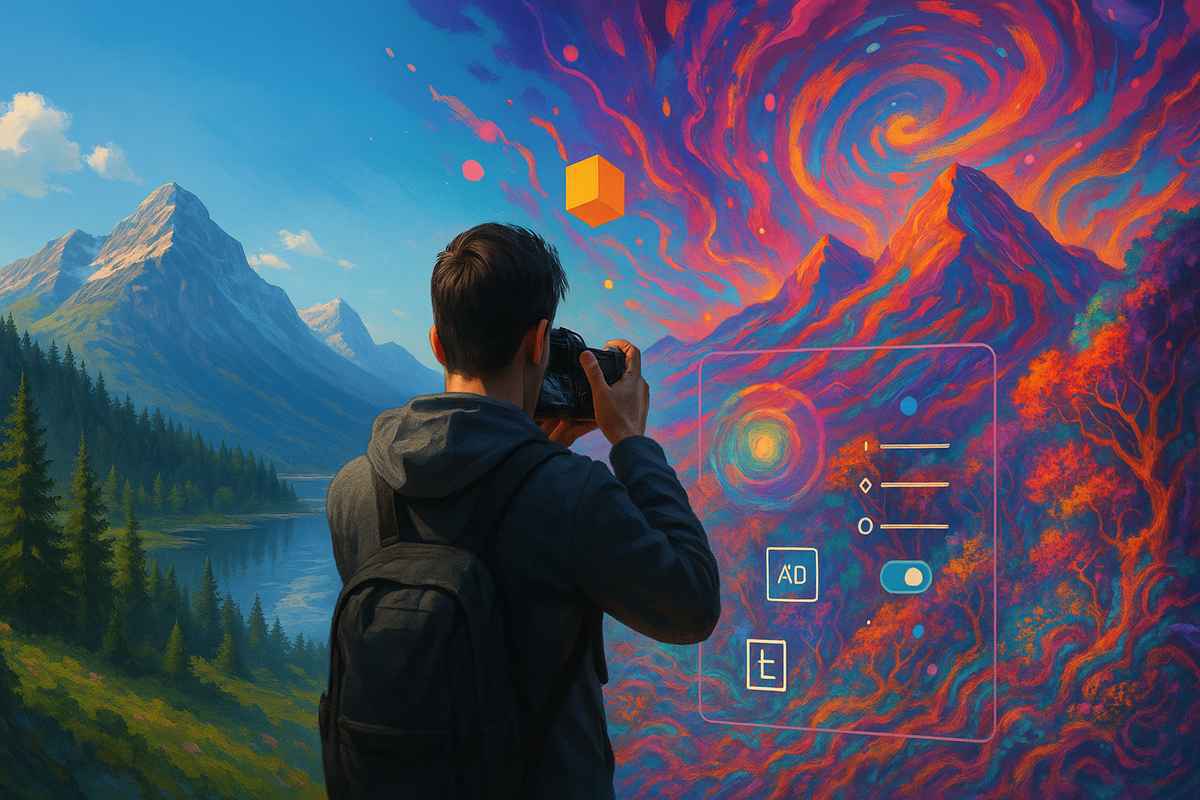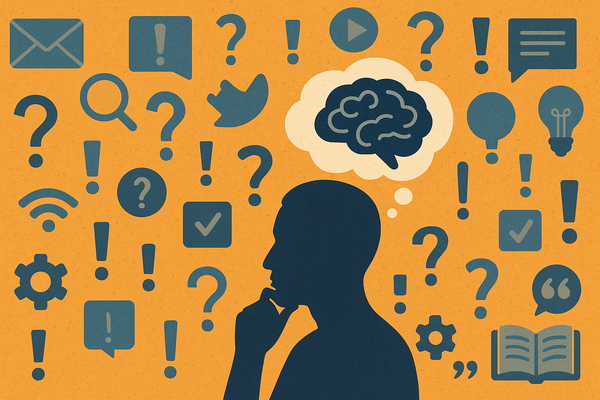Viewpoint: Reimagining Reality - The Power of AI in Photography
The integration of AI into photography brings both transformative possibilities and pressing ethical concerns.

The integration of AI into photography brings both transformative possibilities and pressing ethical concerns. As these tools evolve, they confront society with complex challenges that demand careful scrutiny and responsible action. With great power comes great responsibility, and the use of AI-powered photography tools exemplifies this adage.
Bias and Inequity in AI Algorithms
One of the most pressing issues is the inherent bias in AI systems, a challenge deeply rooted in the data used to train these models. Biases in training datasets can perpetuate stereotypes or reinforce systemic inequalities. For instance, facial recognition systems have been shown to struggle with accurately identifying certain ethnicities, often performing less reliably for people of darker skin tones compared to those with lighter complexions. This disparity, highlighted in research like Mehrabi et al.’s The Role of Bias in AI Systems(2021), can lead to inequitable outcomes in automated tagging or editing tools.
Such issues are not merely technical glitches; they have real-world implications. Consider the potential harm in personal or professional contexts when AI misidentifies a person in a photo, or worse, excludes certain groups from being accurately represented in visual media. These errors could lead to alienation, misrepresentation, or outright discrimination, perpetuating cycles of exclusion in a medium that should celebrate diversity.
Addressing this requires a proactive approach. Developers must prioritize diversity and inclusivity when curating datasets and training models, ensuring that AI tools perform equitably across all demographics. Transparency in the training process and robust auditing mechanisms can further mitigate bias, fostering trust and accountability in AI-driven photography.
Intellectual Property and Authorship
The rise of generative AI, capable of creating original images from textual descriptions, has complicated the landscape of intellectual property rights. These systems are trained on vast datasets, often sourced from publicly available images, which may include copyrighted material. When an AI generates a new image, questions arise: Who owns the output? The person who provided the prompt, the developers of the AI, or the creators of the original images used in training?
The lack of clear legal frameworks creates a murky territory where disputes are inevitable. For example, an artist may find elements of their work subtly echoed in an AI-generated piece, raising concerns about uncredited use and potential infringement. This issue is not hypothetical—several lawsuits have already been filed against companies developing generative AI tools, alleging improper use of copyrighted material in training datasets.
Resolving these dilemmas requires updated intellectual property laws that account for the unique nature of AI-generated content. These laws must balance the rights of original creators with the freedoms afforded to users of AI tools, ensuring a fair and ethical creative ecosystem. Transparency in dataset sourcing and consent mechanisms for including copyrighted material in training sets are essential steps toward achieving this balance.
The Risks of Manipulated Realities
AI’s ability to manipulate and generate hyper-realistic images presents another ethical quandary: the erosion of trust in visual media. When AI can create images that are indistinguishable from reality, distinguishing between authentic photographs and fabricated ones becomes increasingly challenging. This capability has already been exploited in harmful ways, such as the creation of deepfakes—AI-generated videos or images that misrepresent individuals, often with malicious intent.
The implications extend beyond personal harm to societal impacts. Fabricated visuals can be weaponized to spread misinformation, influence public opinion, or destabilize trust in institutions. In a world where “seeing is believing,” the line between truth and deception becomes perilously thin.
Combatting this requires a multifaceted approach. The development of detection tools capable of identifying AI-generated content is crucial, as is the implementation of digital watermarks or provenance tracking to verify the authenticity of images. Additionally, educating the public about the potential for manipulated content can help foster critical consumption of visual media.
The Ethical Imperative for Responsible AI Development
Despite these challenges, the potential for AI in photography remains immense. The ability to generate, enhance, and transform visual content offers unprecedented opportunities for creativity and innovation. However, to fully realize this potential, developers, users, and regulators must work together to ensure AI tools are designed and deployed ethically.
Initiatives like OpenAI’s commitment to transparency and Adobe’s focus on accountable AI design provide promising examples. These organizations emphasize fairness, inclusivity, and responsibility, setting benchmarks for others in the industry. Collaborations between technologists, ethicists, and policymakers are essential to establish guidelines that prioritize human values in the development of AI tools.
Harnessing AI Responsibly: A Vision for the Future of Photography
The integration of artificial intelligence into photography is a double-edged sword, brimming with transformative potential but shadowed by ethical complexities. On this journey, the stakes are high, but so are the rewards. Addressing biases, clarifying intellectual property rights, and mitigating the risks of manipulated realities are not merely technical or legal challenges—they are moral imperatives. These efforts are essential to ensuring that AI enriches rather than undermines the integrity of visual storytelling.
Throughout its history, photography has been a bridge between reality and imagination, evolving from the meticulous craft of the daguerreotype to the dynamic art of digital manipulation. Now, with AI in the mix, this medium is poised to transcend its traditional boundaries. To fully harness AI’s potential, we must develop ethical frameworks that grow in tandem with technological capabilities, ensuring that this new era of photography remains inclusive, truthful, and profoundly creative.
Speaking of that, AI’s integration into photography compels us to reevaluate fundamental concepts like creativity itself. Once viewed as a uniquely human trait, creativity is now being augmented—and sometimes rivaled—by machines. This forces us to reconsider what it means to create. Is the act of providing a prompt to an AI model a form of authorship? Or does true creativity lie in the algorithm’s ability to synthesize ideas and render them visually?
Similarly, questions of ownership and intellectual property grow more urgent as AI tools generate content that draws from vast datasets of existing works. Who owns an AI-generated image: the user who inputs the idea, the developers of the AI, or the creators of the images used in training the model? Legal systems worldwide are still grappling with these issues, and their resolution will shape the future of digital artistry and content creation.
The ability of AI to blur the boundaries between reality and fiction presents another profound challenge. In a world where hyper-realistic, AI-generated visuals can mimic photographs, the potential for misuse—through deepfakes, misinformation, or unethical manipulations—is immense. Addressing these risks requires both technological solutions, such as tools for detecting AI-generated content, and societal efforts to foster critical media literacy.
Navigating the Precipice of a New Era
As we stand at this transformative juncture, the promise of AI in photography is as exhilarating as it is daunting. This technology challenges us to rethink the very nature of visual storytelling, blending human creativity with machine intelligence in once inconceivable ways. Yet, its immense power also demands vigilance, responsibility, and a commitment to ethical innovation.
By confronting biases head-on, ensuring transparency in AI design, and fostering a culture of accountability, we can create a future where AI serves as a force for inclusion, creativity, and truth. The timeless art of photography, infused with the possibilities of AI, holds the potential to connect us more deeply—to each other, to our experiences, and to the stories that define us. If wielded wisely, AI can amplify our innate desire to create and connect, enriching this art form for generations to come. As we move forward, the challenge is not merely to harness AI but to guide it, ensuring that it remains a tool for expression, imagination, and shared humanity.
🔴 Viewpoint is a random series of spontaneous considerations about subjects that linger in my mind just long enough for me to write them down. They express my own often inconsistent thoughts, ideas, assumptions, and speculations. Nothing else. Quote me at your peril.





